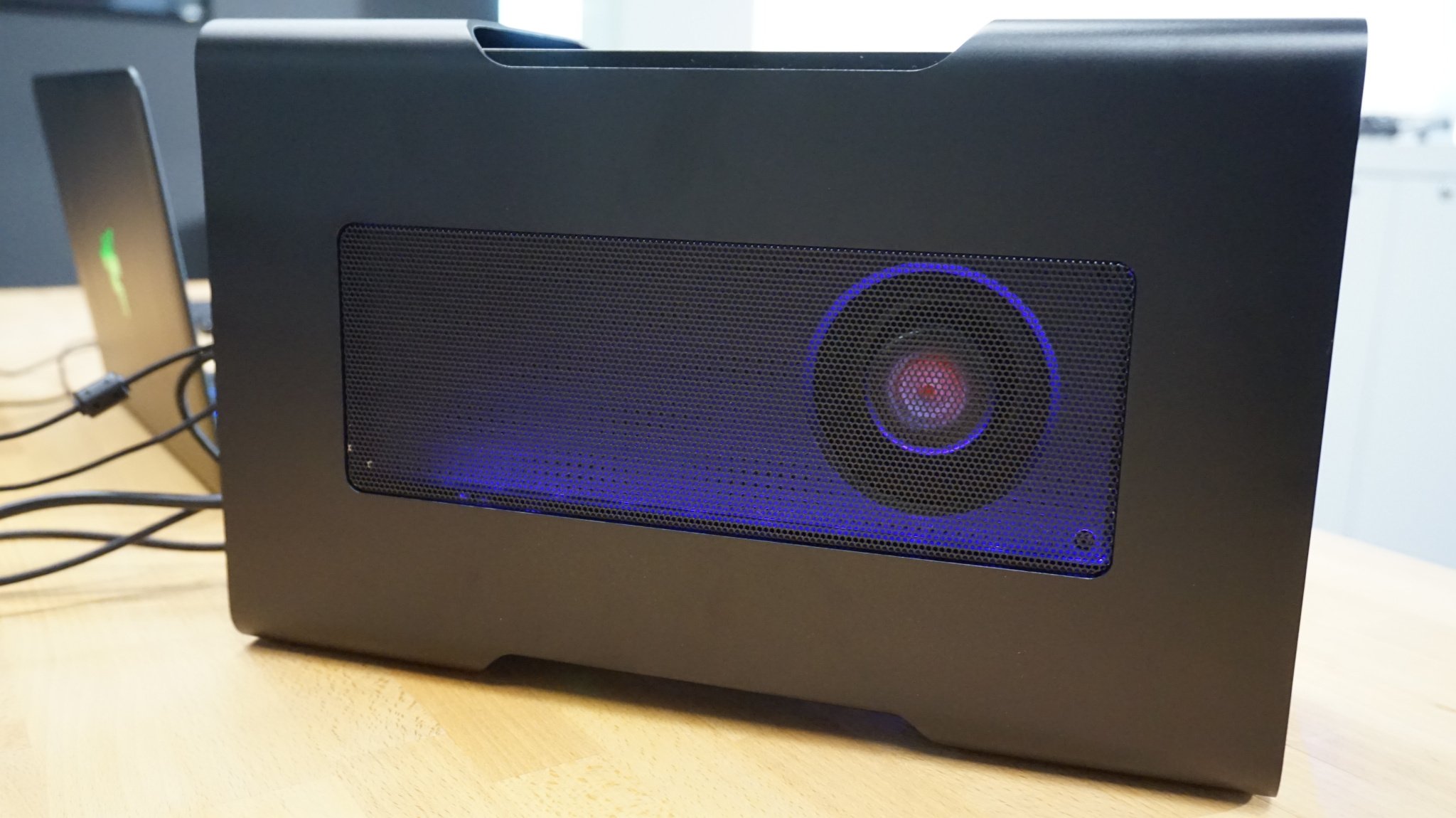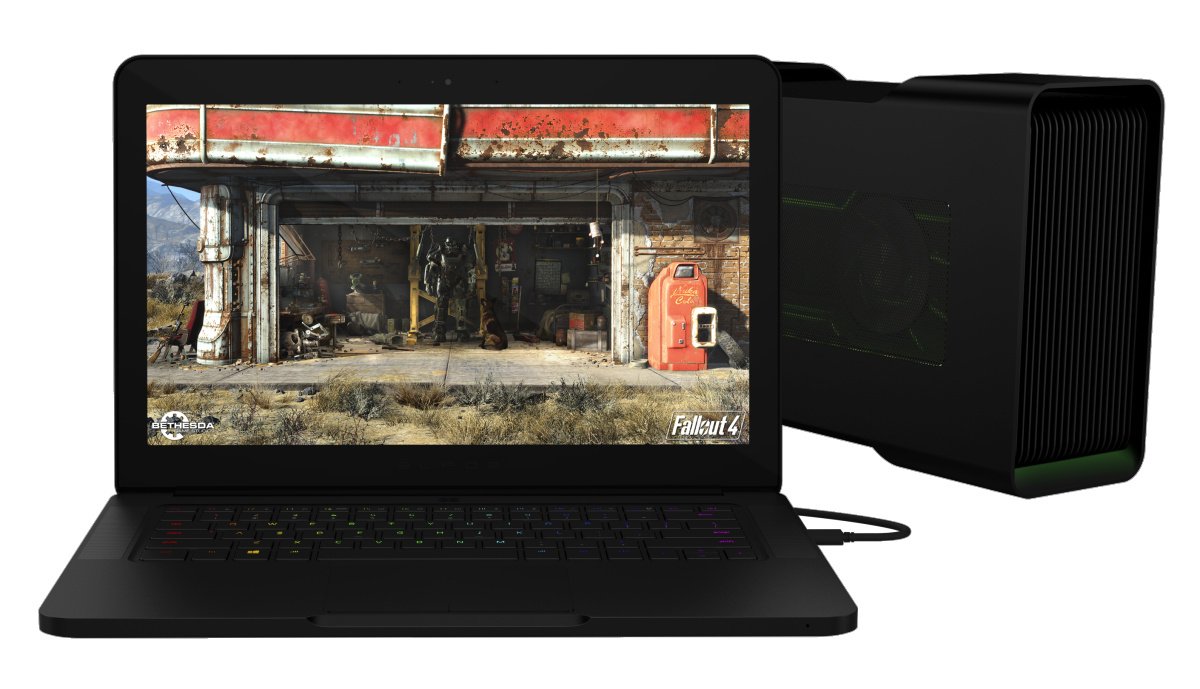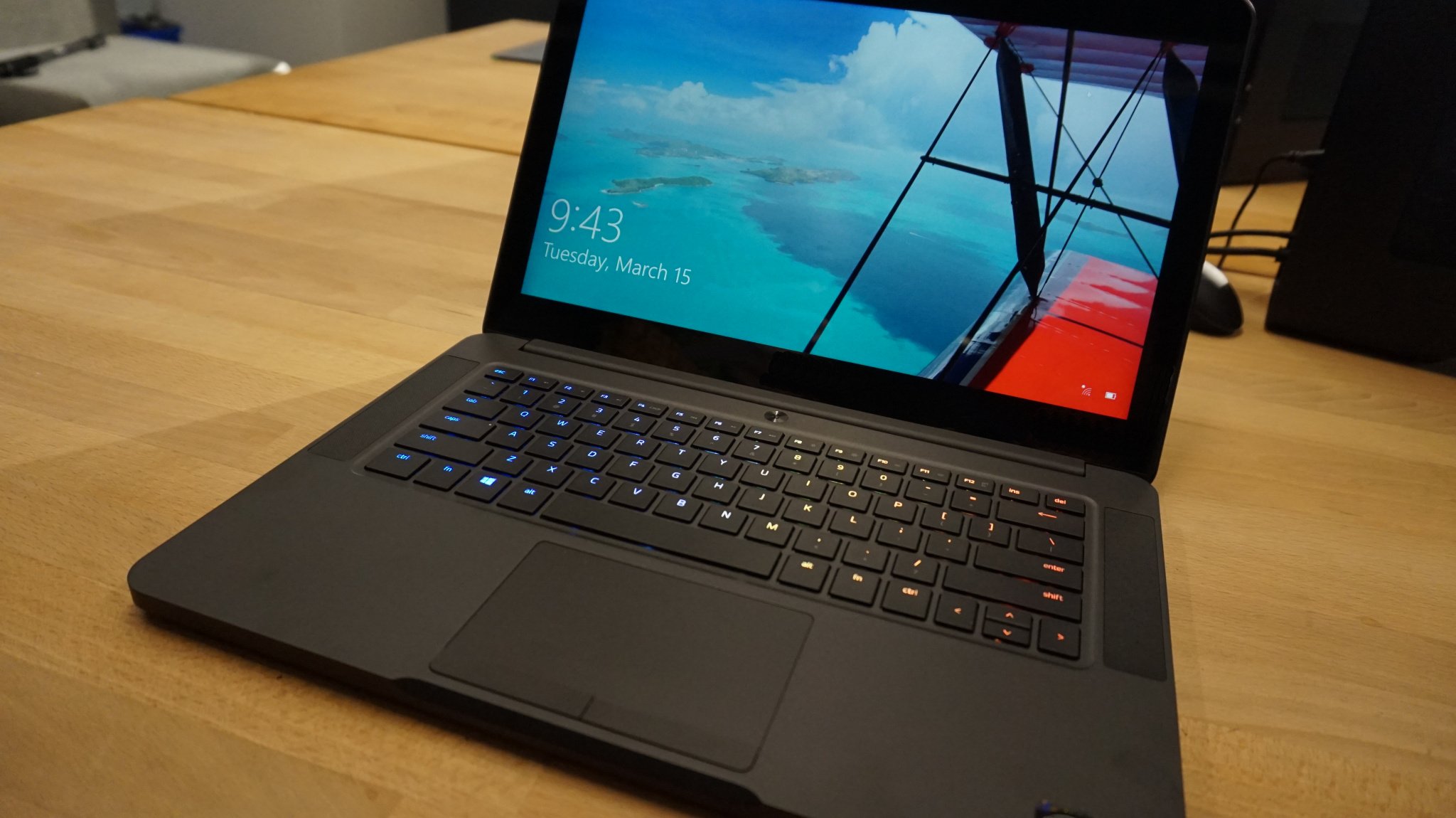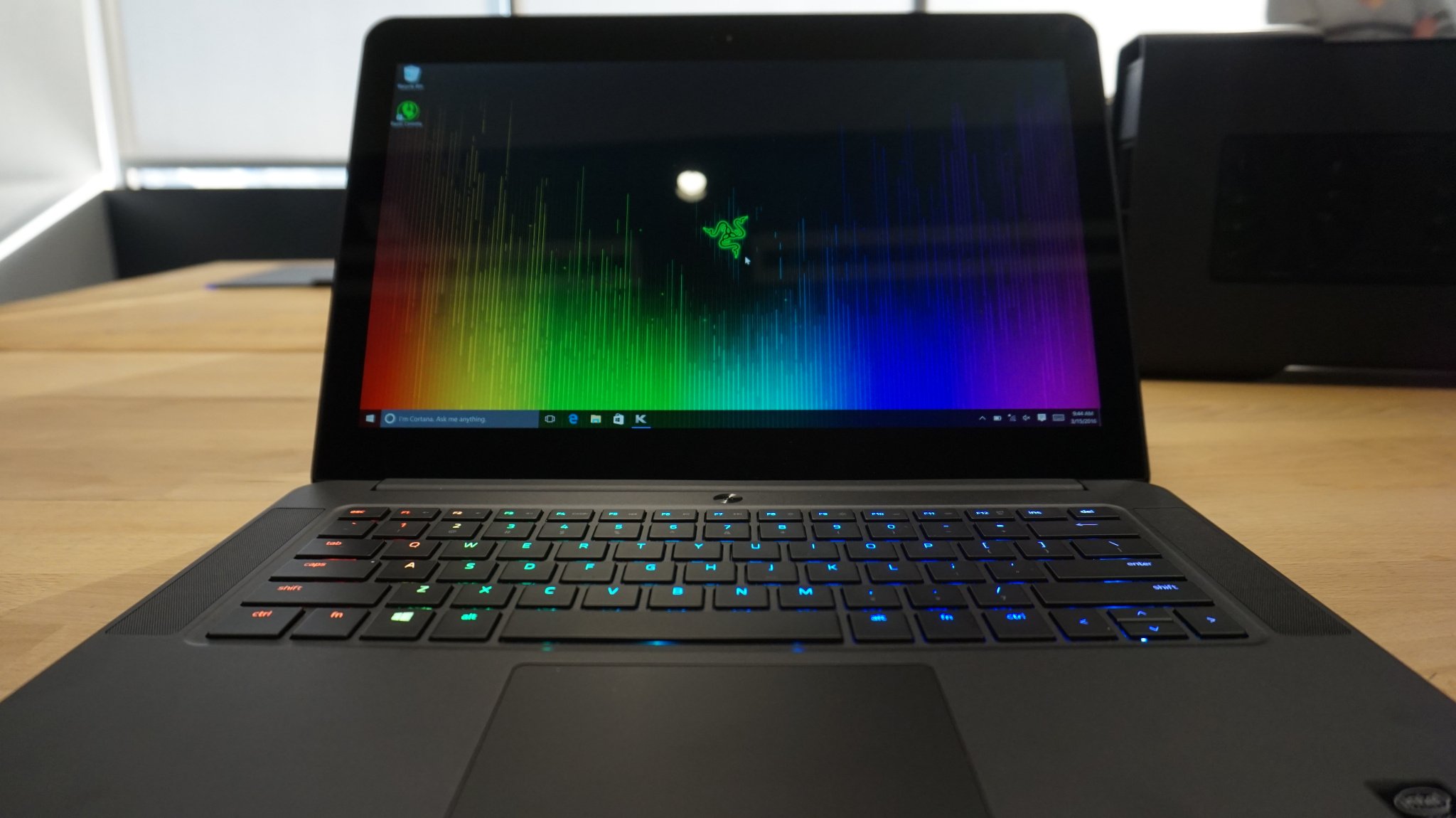Razer Core launch details, desktop graphics from your laptop

First announced in January, the Razer Core is an external graphics enclosure that allows notebook computers to access the power of the best graphics cards. We already knew the upcoming Core would work with the Razer Blade Stealth, Razer's sleek ultrabook that just launched this month. Yesterday, we also discovered that the new Razer Blade 14-inch gaming notebook will also work with the Core. But what about other notebook computers?
Razer has just revealed a fresh batch of details about the Razer Core, including full specs, what types of graphics cards it will work with, the price, and shipping date. The manufacturer will also offer the Core at a discount when bought with compatible Razer notebooks. Read on for full details on the Razer Core, plus our hands-on video from GDC!
What is the Razer Core?

As we've mentioned before, the Razer Core is an external graphics enclosure that allows someone with a compatible notebook to connect a desktop graphics card and utilize its increased graphical horsepower. This allows the notebook user to experience graphics far superior to what a notebook can do because even the best notebook graphics card can't compete with top-of-the-line desktop cards.
What's more, most notebooks can't be upgraded with better graphics cards (or not significantly better). And even if you could get a better one, mobile graphics cards are way more expensive than the equivalent desktop cards. My notebook can accommodate an nVidia GTX 970M (as featured in the new Razer Blade), but it would cost me $700 from my supplier of choice – and that's below retail!
The Razer Core is not the first external graphics closure on the market, but (according to Razer) it's the first true plug and play one. Users can safely connect and disconnect the Core from their notebooks via Thunderbolt 3 cable while the notebook remains powered on.
It doesn't sound like much, but something like this has never been done before. Imagine you have the Razer Blade Stealth with its onboard graphics, unable to run many 3D games. Plug the Core with an appropriate graphics card in and boom, your Stealth can play anything you throw at it.
Razer Core specs:
All the latest news, reviews, and guides for Windows and Xbox diehards.
- GPU Type: (1) double-wide, full-length PCI-Express x16 graphics card
- GPU Max Dimensions: 12.20" x 5.98" x 1.73" (310 x 152 x 44 mm)
- GPU Max Power Support: 375 W
- Connects via Thunderbolt 3 (USB-C) with speeds up to 40 Gigs/second
- Adds 4 USB 3.0 ports and Gigabit Ethernet
- Two light zones powered by Razer Chroma Technology – Can be synced with other Razer Chroma devices
- Power Supply: 500 W
- Approx. Dimensions: 4.13" (104.9 mm) wide x 13.38" (339.9 mm) deep x 8.6" (218.4 mm) high
- Approx. Weight: 10.89 lbs. (4.94 kg)
Which graphics cards and notebooks can be used with the Razer Core?

The Razer Core does not include a graphics card, so they must be purchased separately. Because of the plug-and-play nature of the Core, graphics cards must be certified to work with it. At launch, a variety of AMD cards will be fully certified for the Core thanks to AMD's XConnect technology. nVidia Maxwell card support is currently in beta status, meaning Maxwell cards will work but have yet to be fully validated.
Qualified AMD Radeon graphics cards (AMD XConnect supported with Blade Stealth):
- AMD Radeon R9 Fury
- AMD Radeon R9 Nano
- AMD Radeon R9 300 Series
- AMD Radeon R9 290X
- AMD Radeon R9 290
- AMD Radeon R9 280
Supported NVIDIA GeForce graphics cards (as part of beta program):
- NVIDIA GeForce GTX Titan X
- NVIDIA GeForce GTX 980 Ti
- NVIDIA GeForce GTX 980
- NVIDIA GeForce GTX 970
- NVIDIA GeForce GTX 960
- NVIDIA GeForce GTX 950
- NVIDIA GeForce GTX 750 Ti
- NVIDIA GeForce GTX 750
Compatible Razer notebook models:
- Razer Blade Stealth
- Razer Blade (w/ Thunderbolt 3) as part of beta program
- More to come!
At present, The Razer Core only works with the Razer Blade Stealth and Razer Blade. But Razer is working to make the Razer Core adhere to open standards, so it should eventually work with other Thunderbolt 3-equipped notebooks as well. Hopefully, that compatibility comes to pass, as it would add a lot of value to the Core for people who haven't fully bought into the Razer ecosystem yet.
Razer Core Pricing

The Razer Core is an innovative device that represents a bridge between notebook and desktop computers. Buy a notebook, maybe use it to play light games on the go, and when you get home, plug into the Core for a full desktop experience. Even with a GPU-less notebook like the Razer Blade Stealth, you'll still be able to play the latest games for years to come, should you choose to pony up for the Core and a decent graphics card.
Of course, functionality like the Razer Core's doesn't come cheap. The Razer Core enclosure will cost $499 when it launches in April. You'll also need to purchase a separate graphics card to pair with it if you hope to take advantage of its graphical expansion capabilities.
To sweeten the pot a bit, Razer will also offer the Core for $399 when purchased with a compatible notebook from the Razer online store. That deal also applies to Razer Stealth owners who purchased the Stealth before today's announcement. If you can afford a Razer notebook/Core combo and a separate graphics card, you're in for an exciting mobile and at-home computer gaming experience.
What do you think of the Razer Core's specs and price, radical readers?

Paul Acevedo was formerly a Games Editor at Windows Central. A lifelong gamer, he has written about videogames for over 15 years and reviewed over 350 games for our site. Follow him on Twitter @PaulRAcevedo. Don’t hate. Appreciate!
